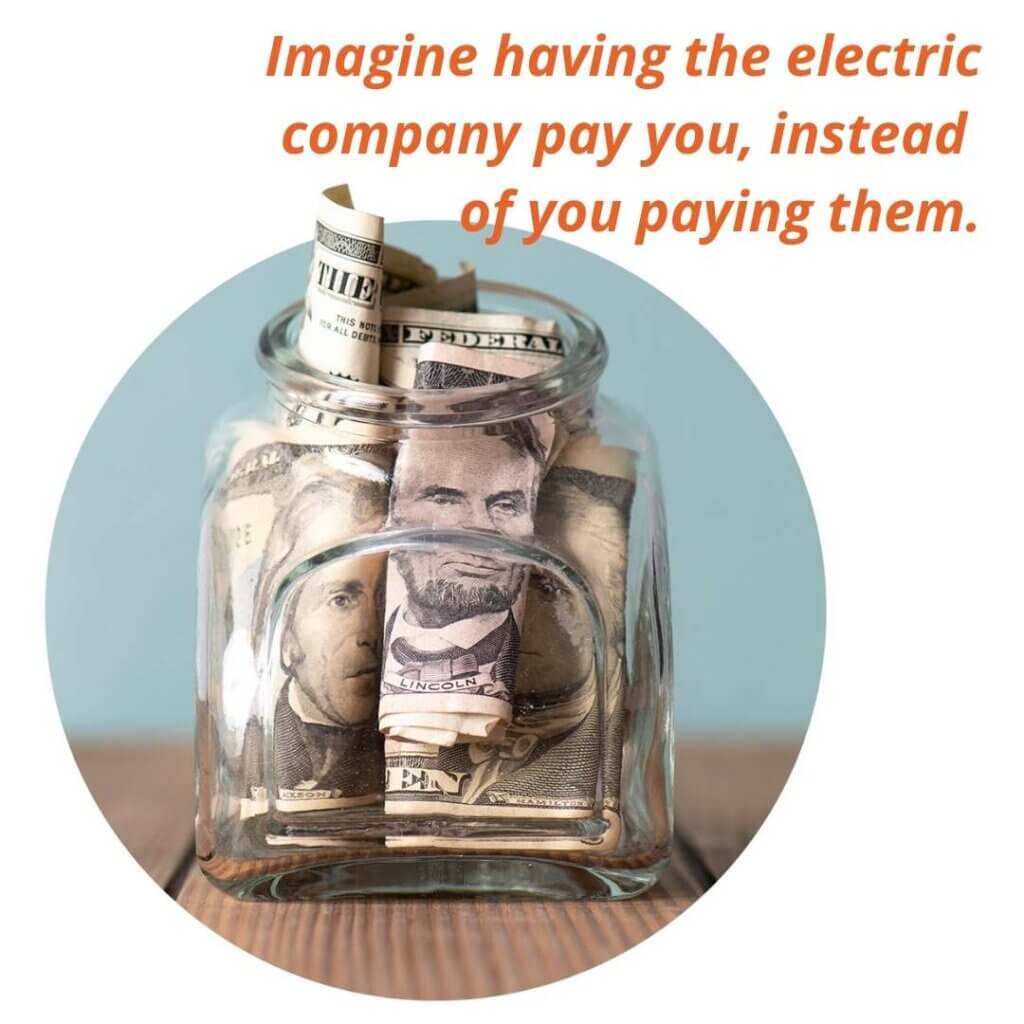Going solar is one of the best investments a homeowner can make in their home because a solar power system can cover most if not all of your electric bill each month. With the ability to lock in your monthly payment, solar also provides peace of mind so you don’t have to worry about unpredictable energy payments or electricity rates.
BrightEra Energy is a company that focuses on integrity, quality and transparency. It is important to us that you have all the information you need to make the best solar decision for you and your family.
Here is your complete guide to going solar!
Why do people go solar?
This guide to going solar is very important for answer the question.There are several reasons to go solar but the main reasons are the potential savings, what it can do to the home’s value and, of course, the environmental benefit. Solar can also add predictability to your life by locking in how much you pay for your system’s energy.
Potential savings: The main reason people go solar is so they can save money on utility bills. How much you can save depends on how much electricity your household uses. The more power you use, the more money you will save by going solar. For example, a typical California household uses about 7,000 kWh per year and pays about $1,500 per year. By going solar, an average household could save $1,307.52 per year or $37,500 over the 25 year warranty period that our solar power systems typically have. If that same household uses a lot of electricity, say 12,000 kWh per year, that household would save about $48,000 over a 25 year timespan.
Possible increase in the value of your home: There are several ways solar can increase the value of your home. If you own solar, your home can become very enticing for a new buyer. This tells them that they can start benefiting from solar immediately without having to wait on the installation process. This can cause your home to sell faster and at a higher price.
More predictable utility rates: When your installation company builds your custom solar system, they create it based on your specific energy needs. This means your monthly bill will reflect your average energy use. This makes your monthly energy bill more consistent.
Imagine the peace of mind you’ll gain by being able to properly budget around a more predictable energy bill.
Tax Credits and Incentives for Going Solar
The Federal Tax credit for solar power currently allows you to deduct up to 26% of the cost of your solar system from the tax you owe at the end of the year. If you owe less than 26% of the price you paid for your system, you will only receive the amount that you owed. You can carry any remaining amount of the credit forward for up to 5 years. If you owe nothing at the end of the year, then you won’t get anything out of the tax credit.
In 2021, the tax credit will be reduced to 26% for the remaining of 2021 and 2022 but this could change and drop to a lower percentage or potentially go away altogether.
Some states offer incentives for going solar. The best way to find out what incentives are available, and which ones you qualify for is to talk to a qualified tax expert. Neither Brightera & Freedom Forever’s family of independent authorized dealers nor Freedom Forever itself can give you tax advice. A qualified tax professional will understand your situation and be able to give you the most relevant advice.
Better for the environment: Most of the time, people go solar for financial reasons. But they are still helping to save the environment. Solar panels make up for the amount of carbon used to produce them in about 2 years. For the remaining decades of service life left in them, they reduce the amount of carbon produced to make electricity.

How solar works
Now that you know the benefits of going solar, it’s time to know exactly how it works. Getting educated on the process of going solar can help you make the most informed decision, and that’s our goal!

Net metering Net metering happens when you use less energy than what your system has produced. If that leftover power goes back to the grid, you may receive credit on your bills and get a check at the end of the year for those credits from your utility company. It’s important to note that not all utilities offer net metering.
Storage Systems (A.K.A. energy storage systems) are normally used as a temporary back-up source of power. For example, batteries can provide emergency energy to customers in coastal climates that experience regular outages. Batteries can also be configured to discharge when the solar system is not producing and during peak consumption or peak utility rate hours.
What to know before going solar – Guide to going solar
We believe that most people could benefit from going solar.
Here is some useful information to get your started:
Your roof type
We can install on most roof types. Depending on the roof type, the installation process may differ slightly. No matter what type of roof you have you will benefit from a 10-year penetration warranty. Roof types that solar panels are commonly installed on include:
- Composite Shingle: made of a mixture of several commonly used roofing materials such as fiberglass, recycled paper products and asphalt.
- Tile: Made of concrete
- Torch-Down: Often low angle or flat roofs
- Foam: Often applied on top of existing roofs
If your roof type isn’t listed, don’t worry. Solar can be installed on nearly every type of roof. A solar power installation company such as Freedom Forever can advise you about what roofing work maybe required to mount solar panels on your roof.
Roof condition
Solar panels can be costly to remove once they are installed. For that reason, we take a close look at the condition of your roof and let you know if any repairs will be required prior to installation.

How much sunlight your property gets

It is very important that your property is exposed to enough sunlight. If your property is surrounded by tall trees or other obstructions to sunlight, we will let you know what your options are. We may also recommend mounting your system on the ground or recommend other ways to get your property ready for solar. Just remember, the more sunlight your property gets, the better.
Know your financial options
When it comes to paying for your system, you have different options available. Brightera & Freedom Forever partners with some of the top financing companies in the country to offer you a wide range of payment options. We want to make it as easy as possible for you to go solar.
Solar purchase vs. leases and Power Purchase Agreements (PPA) which is better
Purchase: If you are able to purchase your solar system with cash, this affects the overall price greatly. The reason is, you’re avoiding any loan interest rates and any potential savings is going right into your pocket. This option will give you the greatest return on your investment.

Loan: When you choose to take out a loan, the better your credit is, the more affordable rate you’ll get. Finance companies all have different standards, so if you are turned down by one company, this does not mean that you will not qualify for financing with a different company. You may be able to get financed even with a FICO score as low as 600.
PPA: A Power Purchase Agreement is a contract between a homeowner and a solar power company for the homeowner to pay a rate for electricity that is lower than what that homeowner would pay the utility company. You don’t save as much as you do with a purchased system, but if you can’t finance a system, a PPA is a great option that can still save you tens of thousands of dollars depending on what rates you’re paying now and how much power you use.
How the installation process works
This guide to going solar is very important for answer the question. There is more to going solar than just building a solar system on your roof and flipping a switch to turn it on. First we will design your system and get the necessary permits from your local jurisdiction. We will then build your system. Once the system is built, your local utility company needs to come out to your home and inspect it. If the system passes inspection, the last step is for the utility to grant Permission-to-Operate (PTO).
Assessing your energy needs
Your solar journey begins with an assessment of your solar needs. Your solar power dealer’s sales representative comes to your home and analyzes your utility bill. Using that information, the sales rep determines how much power you need to produce to offset your electrical consumption.
Plans & Permits
At this point, we’re working hard behind the scenes to get your home ready for installation. During this time, if it hasn’t already happened, a certified Site Auditor will be coming to your home to gather photos, videos, and measurements. These assets will go to our Engineers and Designers so they can create your solar system plans.
From there, we’ll send these plans to your city approval department to receive your solar permit. This process can take up to 6 weeks to complete. After that, it’s time for your installation day!
Installation
We will determine if anything on your site (such as your roof) would require a repair during your site audit prior to installation day. Once your site is ready, installations are usually completed in two days or less.
Inspection
After the system is installed, your local utility company and/or the AHJ (Authority Having Jurisdiction) will need to come out and inspect it prior to allowing it to be connected to the grid. The utility company can take all the time they want to schedule the inspection. If for any reason your new system doesn’t pass, the utility company will schedule another inspection.
Permission to Operate
After your system passes inspection, your solar installer will ask the utility company for Permission to Operate (PTO). This is the final step in the installation process. Once PTO is granted, your solar installer will remotely switch your system on. At that point, your system begins delivering electricity to the grid and potential savings to your bank account!
You will receive an email from our monitoring department with instructions on how to set up your monitoring portal. In most cases, the inverter will need to be connected to your internet service in order for us to monitor your system.
Contact us today!
Phone Number: 1 (877) 805-8528
We have a special promotion for you.
Send us an email and we will send you the guide to go solar info@brighterainc.com
Be Smart, Be Solar, Be BrightEra!!. Send us your information https://bit.ly/BeBrightEraEnergy


Great article and great information
Great article